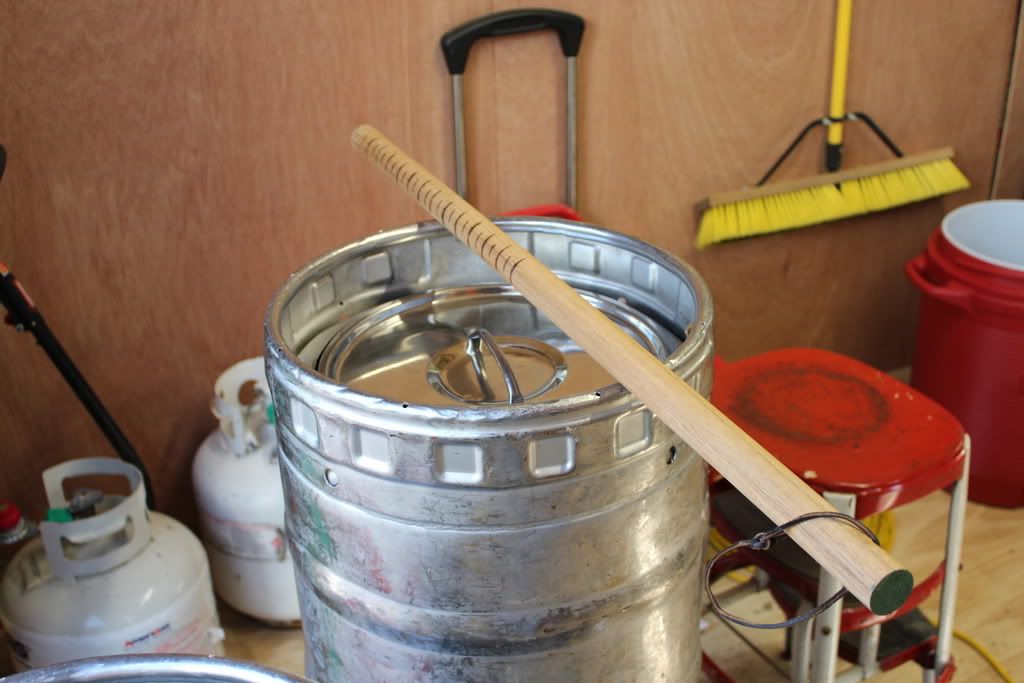ChadChaney
Well-Known Member
How do you guys measure your wort while in the brew kettle to know when you have hit your volume or need to top up, etc? First AG on Sat. looking for pointers.


I pre-measured my spoon before brewing my first AG batch. Just add a half gallon of water, mark the spoon with a sharpie, add another half gallon, make another mark, etc... until you get to the top of the pot.
Then when brewing, use the spoon to tell you how much wort you have.
Get yourself a cheapo yardstick from e.g. Home Depot.
Measure the inside diameter of your kettle, in inches. Try to be as accurate as you can on this number.
Calculate the surface area of your vessel. The forumla is:
R = 1/2 * diameter
Pi*R^2
That number also happens to be the number of cubic inches in your kettle, per inch of height.
There are 231 cubic inches in a gallon.
So, the number of inches per gallon (I will call this N) in your kettle is:
N = 231 / (Pi * R^2)
Now, look at the yardstick, and on the back side, mark off with a permanent marker every N inches as a gallon mark. If you want to do half or quarter gallons, that is easy enough...
There is no sense wasting a bunch of water to measure the volume of something that is easy enough to calculate.

Get yourself a cheapo yardstick from e.g. Home Depot.
Measure the inside diameter of your kettle, in inches. Try to be as accurate as you can on this number.
Calculate the surface area of your vessel. The forumla is:
{snip a bunch of math stuff}
There is no sense wasting a bunch of water to measure the volume of something that is easy enough to calculate.

We have been down the road a number of times. It is becoming also like the secondary vs. extended primary debate...
You assume the vessel is a perfect cylinder with that formula. Unfortunately, my pot has a rounded edge where the sides meet the bottom, a slight flare which makes the top about a 1/2 wider than the bottom, and a dent in the side, all of which renders the "math solution" not very practical. That is why I used the "fill and mark" method, right before I did my first AG batch. I used my boil kettle to heat my strike water so nothing went to waste.
Math may make things simple in a perfect world, but in reality there are enough variables to make the "fill and mark" method just as easy.
Why assume I would waste water? You use your math, and I'll use my eyes.
Do whatever you want. One is easier and less time consuming than the other.
I would imagine they would take almost the exact same amount of time.
After reading all this..
I want to calculate the volume of my kettle mathematically, use the fill method, check both methods against each other and dump the water down the drain.
After reading all this..
I want to calculate the volume of my kettle mathematically, use the fill method, check both methods against each other and dump the water down the drain.

Enter your email address to join: